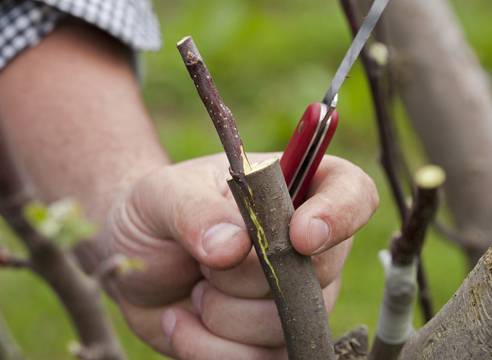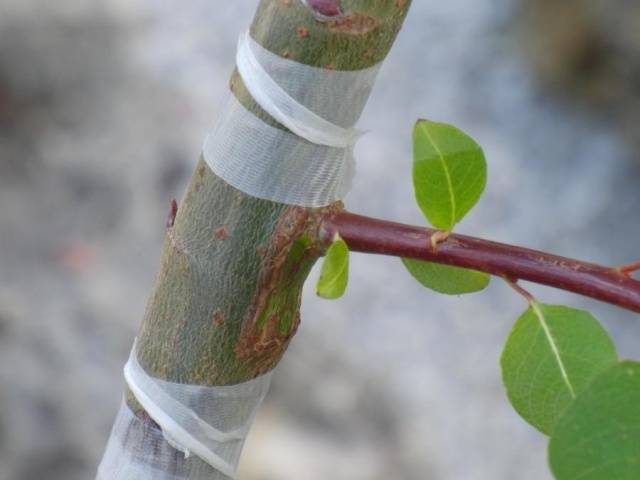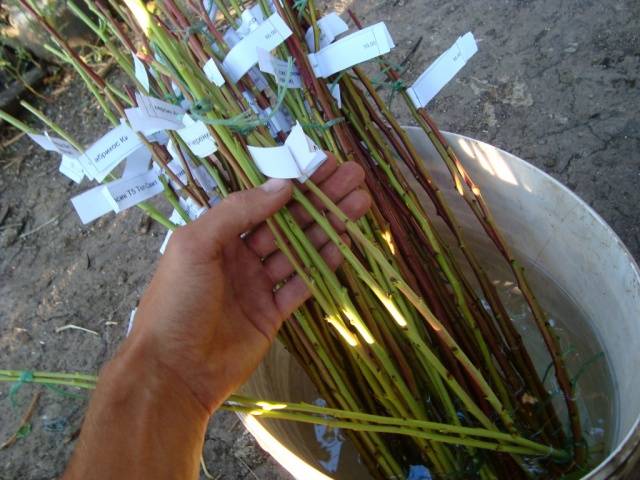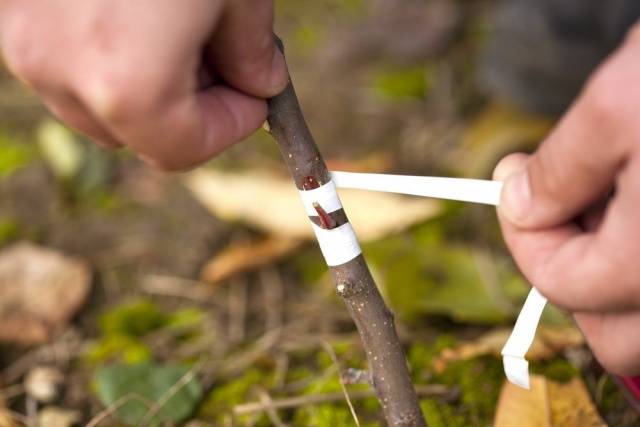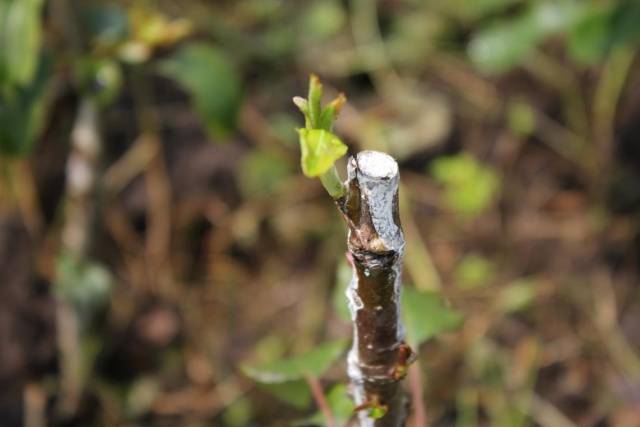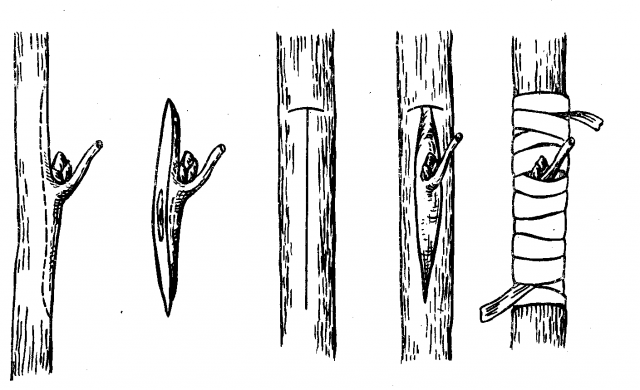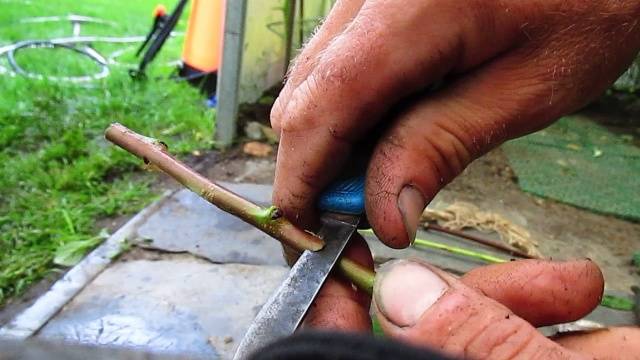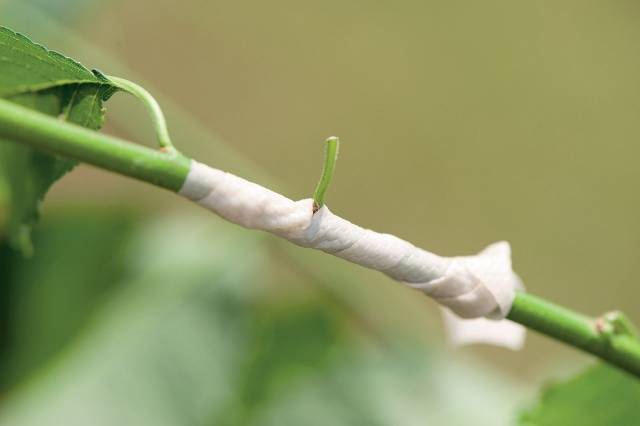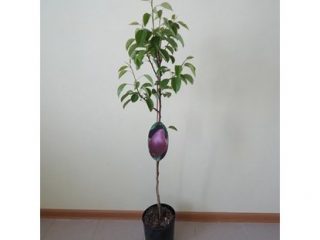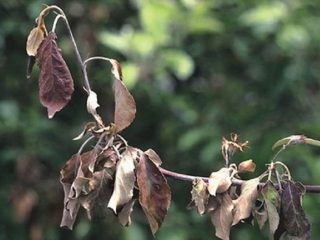Content
Reproduction of fruit trees and shrubs by grafting among summer residents is considered "aerobatics": this method is subject only to the most experienced gardeners with extensive experience. But even beginners really want to get some rare and expensive variety into their garden, but it is not possible to buy a real seedling. In this case, such a method of grafting fruit trees as budding is useful. The most important advantage of this method is the high percentage of plant survival. It is possible to carry out budding even in adverse weather conditions, and only one bud of the desired culture is required to carry out it.
This article is about the effectiveness of budding fruit trees and shrubs, about the advantages of this method of grafting and about the technology for its implementation.
What it is
The first thing a novice gardener will face when deciding to start propagating his trees is terminology. To begin with, a beginner only needs to master two terms: rootstock and scion. In this case, stock is the name of the plant, on the roots or other parts of which a new species will take root. Graft the same - this is a part of the tree that the gardener would like to multiply and get on his own site.
Today, at least two hundred methods of grafting fruit trees and berry bushes are known. And budding is considered one of the simplest.
Budding is the grafting of a plant with one bud or one eye. The methods of such vaccination differ in the implementation technology, which can be individual for each summer resident.
The bud is taken from the cultivated plant to be propagated. It can be grafted onto any rootstock, be it a wild or varietal tree. Budgeting can differ in execution time, dividing into summer and spring:
- in the spring, the trees are propagated by the bud that formed last summer. Cuttings with these buds should be cut in late winter or autumn and stored in a cool, dark place (in a basement, for example). Such a bud will grow in the current season, therefore, the method of inoculation is called budding with a sprouting eye.
- For summer budding takes a kidney that has matured this season. The material for grafting (eye) is cut out immediately before transplanting. A peephole grafted in the summer should take root, overwinter and start growing only next spring. Therefore, the vaccination method is called by budding with a sleeping eye.
Pros of grafting trees with a bud
There are clear advantages to grafting fruit trees by budding:
- ease of vaccination, available even to a beginner;
- slight trauma to the stock and propagated plant;
- the minimum amount of scion material is only one eye;
- execution speed;
- the possibility of repeating the vaccination in the same section of the tree if the procedure has failed;
- good survival of the kidneys - most often the vaccination is successful;
- compatibility of varietal crops with wild animals and any other rootstocks;
- the ability to vaccinate twice a year.
It is very important to comply with the recommended dates for budding and harvesting cuttings. It was at this time that the bark easily peels off the tree, and the peephole can be cut off without traumatizing the shoot. Intensive division of cambium cells during the same period ensures good graft engraftment and guarantees excellent results.
Execution technology
Budding fruit trees can be done in a variety of different ways. Any summer resident can even develop his own technology for grafting eyes. Below we will consider a couple of the most popular and "win-win" budding options.
Eye grafting in stock
The easiest and fastest method of budding, which consists in attaching the cut area of the bark with the bud to the same incision on the stock.
The inoculation of the eye in the butt should be done as follows:
- Prepare the necessary tools: a sharp knife with a thin blade, wrapping tape.
- Wipe the rootstock area with a damp cloth to remove dust and dirt.
- With a knife you need to cut along the rootstock to a depth of 2-2.5 cm, making a "tongue". Less than half of the resulting "tongue" must be cut off.
- A shield with a bud of the same size (2-2.5 cm) and shape should be cut from the cuttings of a valuable variety.
- The scutellum is wound behind the "tongue", combining its edges with the cut on the rootstock bark. If the flap protrudes beyond the edge, it is trimmed with a knife. When the scion is already cut, at least one of its edges is connected to the cut on the stock.
- The vaccination site is tightly bandaged with plastic or special ocular tape. The kidney itself can be either bandaged or left outside - the opinions of gardeners on this matter differ, but practice proves the viability of any of the winding methods.
- After two weeks, the vaccine should take root.
In this case, the thickness of the rootstock is not essential, so the eyes can be grown on overgrown shoots. Another advantage of the application method is the slight dependence of the success of the event on the time of year: you can do budding from mid-June until the last days of summer.
Flap grafting into the T-cut
The essence of such budding is rubbing the bud to the cambium layer in the stock through an incision in the bark. It is very important to choose the right moment: sap flow in the tree at the time of grafting should be the most intense.
It is very simple to make incision budding:
- From a varietal cutting, you need to cut a bud together with a rectangular or oval section of the bark: about 2.5-3 cm long and 0.5 cm wide. The thickness of the shield should be small.
- A T-shaped cut is made in the bark of the stock, the dimensions of which correspond to the sizes of the scion. First, a horizontal cut is made, then a vertical cut. After this, the edges of the vertical cut are slightly folded back to form a "pocket" for the shield with the scion.
- A scion with a peephole is inserted into the "pocket" from top to bottom. The upper edge of the flap is adjusted with a knife so that the edges of the bark of the scion and rootstock fit snugly together.
- The shield is tightly fastened to the stock with plastic tape or electrical tape. They start bandaging from the bottom, and it is better to leave the kidney open.
- With the spring grafting, the bud should grow in 15 days. The success of the summer event is evidenced by the slight detachment of the petiole located above the kidney.
Success secrets
In order for the vaccination to be successful, certain requirements must be met:
- choose young shoots for budding, the diameter of which does not exceed 10-11 mm;
- the bark on the knot should be smooth and elastic;
- do not plant a peephole on the south side of the crown - the sun will dry out the rootstock;
- for guaranteed success, you can graft two buds at once on both sides of the stock, only they should be tied at the same time;
- to perform the method, no putty is required, polyethylene is quite enough;
- on one shoot, several eyes can be grafted in a row, only the interval between them should be 15-20 cm;
- the lower kidney should be grafted at least 20-25 cm from the fork in the trunk;
- it is strongly not recommended to breed in rainy weather;
- in the summer, they choose a cloudy cool day for vaccination or make budding in the morning, in the evening;
- a couple of weeks before the summer vaccination, it is recommended to water the tree in order to activate the process of sap flow in it;
- fully matured, large eyes located in the middle part of the shoot take root best;
- only well-ripened cuttings are suitable for kidney grafting, which can be recognized by the characteristic crackle when bending.
Conclusion
Budding is the easiest and most affordable way to graft fruit trees and shrubs. Inexperienced gardeners are advised to start with this method of reproduction, because the trauma for the rootstock in this case will be minimal. If the bud does not take root, the procedure can be easily repeated and the same shoot can be used.
Read more about budding fruit trees in this video:

